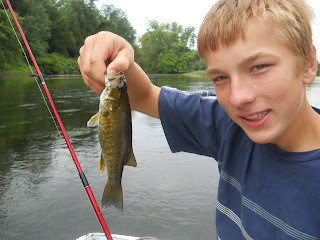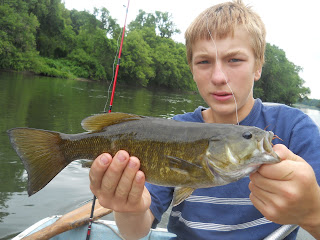Family: Salvelinus
Diet: Mayflies, leeches, worms, crayfish, and minnows
Average size: 1-5 lbs
World record: 14lbs 8oz
The Brook Trout, besides it's name is a Char, a very close relative to True Trouts. Besides being my favorite fish, is one of the only native trouts of Chars in New York (The other being the Lake Trout). In fact, there are no native trouts in New York State since the Lake Trout is a Char, too. It genarlly lives in small, swift, brooks (hence it's name) of New England. 80% of its diet is insects, and the other 20% is random things, such as worms and leeches. It is known for being one of the most beautiful fishes in North America. It has been introduced into Northern Europe. It tipically lives in unison with the more populous and tolerant Brown Trout, Which also lives in cold, swift rivers. It is generally smaller, too. It is very sensitive to habitat change, and is genarlly the first to go if a creek is polluted. In the Saquoit Creek, A river about 20 miles away from our house, almost all the native Brook Trouts have been killed by pollution from a meatal factory
http://upload.wikimedia.org/wikipedia/commons/b/b8/Brook_trout_1918.jpg
A drawing of a Brook trout
A Brook Trout caught in Wyoming
http://upload.wikimedia.org/wikipedia/commons/f/f9/Salvelinus_fontinalis.jpg
A Brook Trout






























 The kind of bait we used: spinner-bait. The rotating blade reflects light and attracts fish. An all-around good bait which can catch anything but bottom-feeders, and my personal favorite.
The kind of bait we used: spinner-bait. The rotating blade reflects light and attracts fish. An all-around good bait which can catch anything but bottom-feeders, and my personal favorite.











